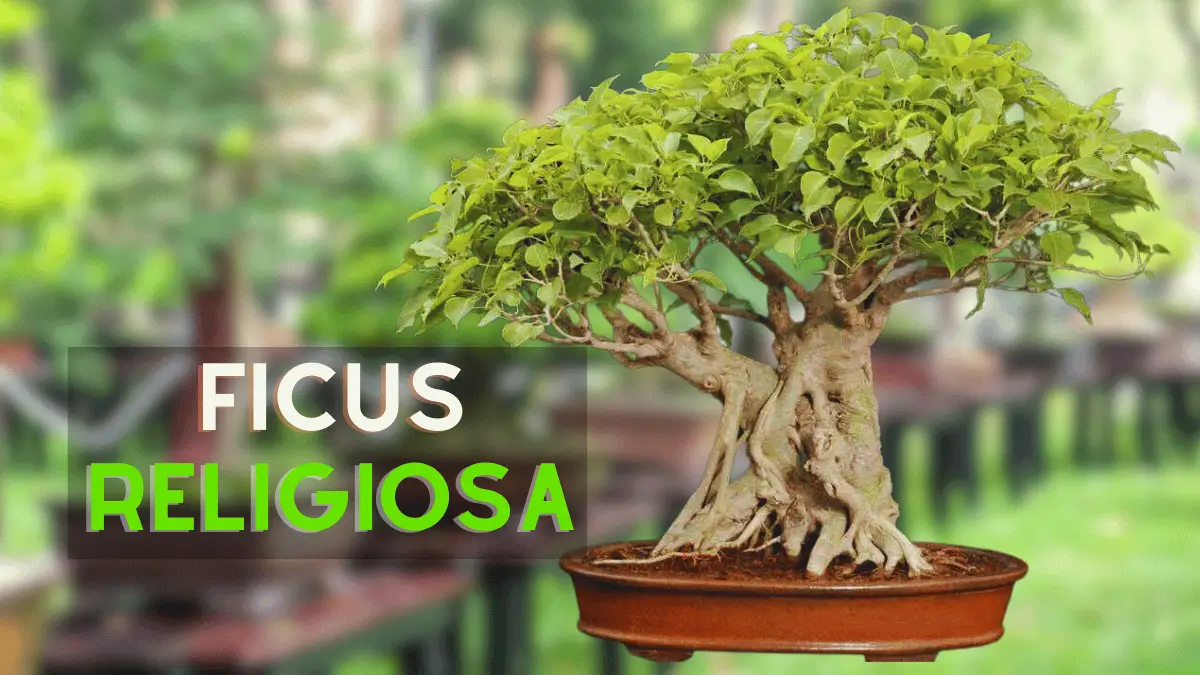Among the diverse array of bonsai species, the Ficus Religiosa stands out with its graceful appearance and deep-rooted symbolism.
Revered as a sacred tree in various cultures, the Ficus Religiosa, also known as the Bodhi tree or the Sacred Fig, holds a special place in the hearts of bonsai enthusiasts.
In this article, we will explore the art of caring for your Ficus Religiosa bonsai tree, ensuring its health and longevity.
Understanding the Ficus Religiosa
Before we delve into the care and maintenance practices, let’s familiarize ourselves with the unique characteristics of Ficus Religiosa. Originating from the Indian subcontinent and Southeast Asia, this species is revered for its spiritual significance and iconic heart-shaped leaves.
The Ficus Religiosa bonsai showcases a well-defined trunk, intricate branching structure, and aerial roots that add to its aesthetic appeal.
Creating the Perfect Environment
To provide optimal growing conditions for your Ficus Religiosa bonsai tree, it’s essential to replicate its natural habitat as closely as possible.
Here are some key considerations:
Light:
Ficus Religiosa bonsai trees thrive in bright, indirect light. Place your tree near a window where it can receive filtered sunlight throughout the day.
Avoid exposing it to direct sunlight, as this can scorch the delicate foliage.
Temperature and Humidity:
Ficus Religiosa bonsai thrives in moderate temperatures. Ideally, anything between 65°F and 85°F (18°C to 29°C) is ideal for the bonsai.
The tree also needs Adequate humidity. You can enhance the humidity levels simply by placing the bonsai on a humidity tray filled with water or by using a good quality humidifier like this in the room.
Air Circulation:
While the Ficus Religiosa appreciates a humid environment, it’s equally important to ensure good air circulation around the tree. Stagnant air can lead to fungal issues and hinder its growth. Placing a small fan nearby can help maintain a gentle breeze.
Soil and Potting:
Selecting the right soil mix is crucial for the health of your Ficus Religiosa bonsai. Use a well-draining blend, such as a mixture of akadama, pumice, and lava rock.
Repotting your bonsai tree every two to three years will promote root health and prevent it from becoming root-bound.
Watering and Feeding
Watering is a fundamental aspect of bonsai care, and getting it right is essential for the well-being of your Ficus Religiosa. Follow these guidelines to keep your tree properly hydrated:
- Watering Frequency: Check the moisture level of the soil regularly, and water when the top inch (2.5 cm) feels slightly dry. Be mindful not to overwater, as the Ficus Religiosa is susceptible to root rot.
- Watering Technique: Water your bonsai thoroughly until the water flows out of the drainage holes. This ensures proper hydration and helps flush out any accumulated salts.
- Fertilization: Providing your Ficus Religiosa bonsai with balanced nutrition is crucial for its growth and vitality. During the growing season, from spring to autumn, use a specialized bonsai fertilizer diluted to half the recommended strength. Adjust the frequency based on the manufacturer’s instructions.
Pruning and Shaping
Pruning and shaping are integral to maintaining the desired form and aesthetic appeal of your Ficus Religiosa bonsai tree. Here are some key techniques to keep in mind:
- Branch Pruning: Regularly inspect your bonsai for dead, damaged, or unwanted branches and remove them carefully using clean and sharp bonsai pruning shears. Pruning during the tree’s dormant period in late winter or early spring is generally recommended.
- Leaf Pruning: To encourage finer branching and create a more compact foliage pad, selectively prune the larger leaves. This allows light to penetrate deeper into the tree, promoting inner growth.
- Wiring: Wiring can be employed to guide the growth and shape of your Ficus Religiosa bonsai. However, care must be taken to avoid damaging the delicate branches. Use bonsai-grade aluminum or copper wire, and remove it promptly to prevent wire scars.
Pests and Diseases
Despite their resilience, Ficus Religiosa bonsai trees are not immune to pests and diseases. Regular monitoring and prompt action are crucial to keep your tree healthy. Here are some common issues to be aware of:
- Aphids: These tiny insects can cluster on the undersides of leaves, causing stunted growth and leaf curling. Use insecticidal soap or neem oil to control their population.
- Mealybugs: These white, cotton-like pests can infest the foliage and branches. Remove them manually with a cotton swab dipped in rubbing alcohol, or use insecticidal soap.
- Root Rot: Overwatering or poorly draining soil can lead to root rot. If you notice yellowing leaves, foul odor, or mushy roots, take immediate action. Trim away affected roots, repot the tree in fresh soil, and adjust your watering habits.
Cultivating Patience and Serenity
Caring for a Ficus Religiosa bonsai tree is not just about horticulture; it’s a journey that instills patience, discipline and a deep appreciation for nature’s artistry.
As you dedicate yourself to the care and maintenance of your bonsai, take time to reflect on the inherent symbolism of the Ficus Religiosa and the tranquility it brings to your surroundings.
With proper care, your Ficus Religiosa bonsai tree will flourish, embodying the spirit of harmony between man and nature. Embrace this ancient art form, and let the grace and beauty of your bonsai enrich your life for years to come.
